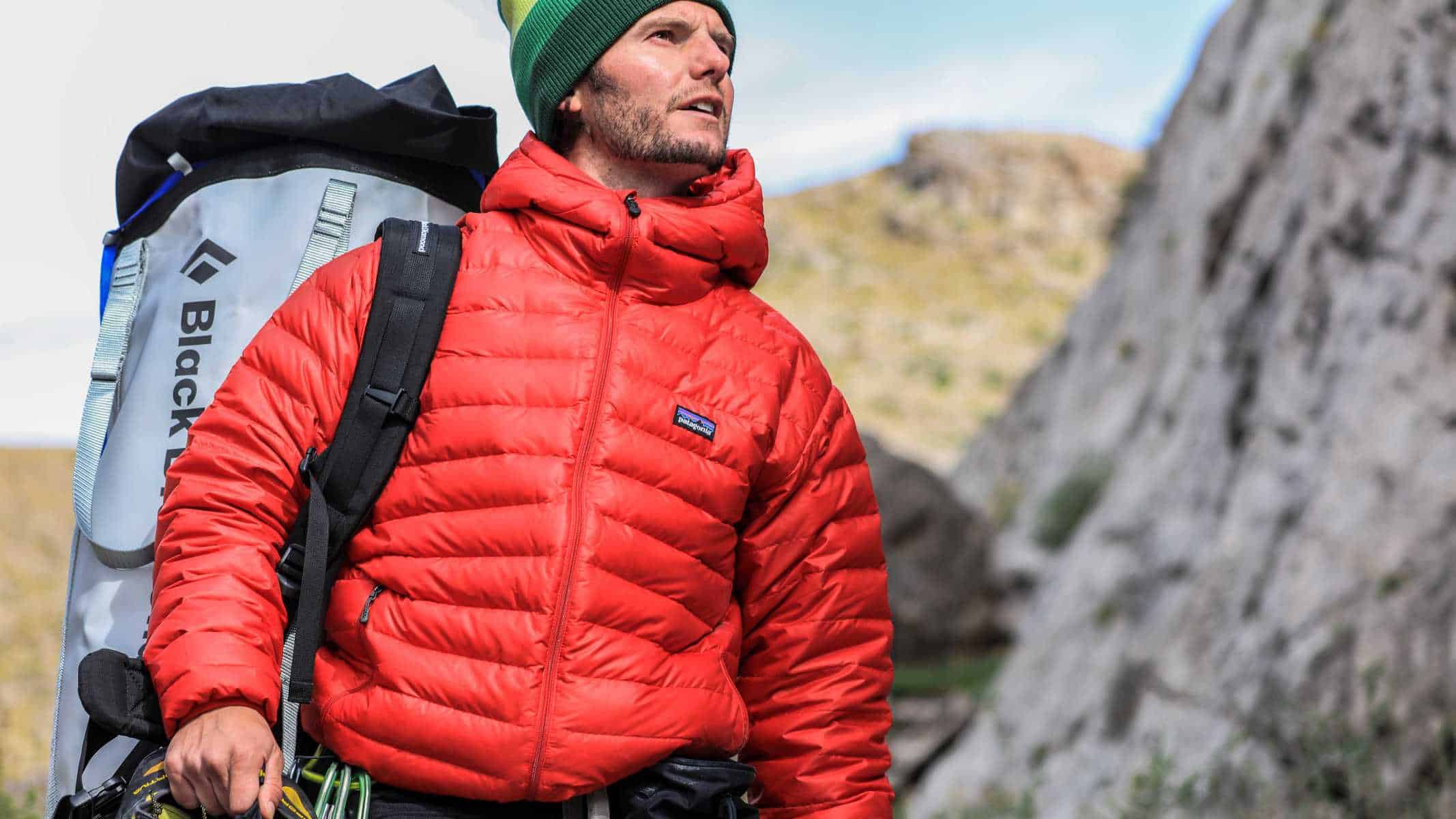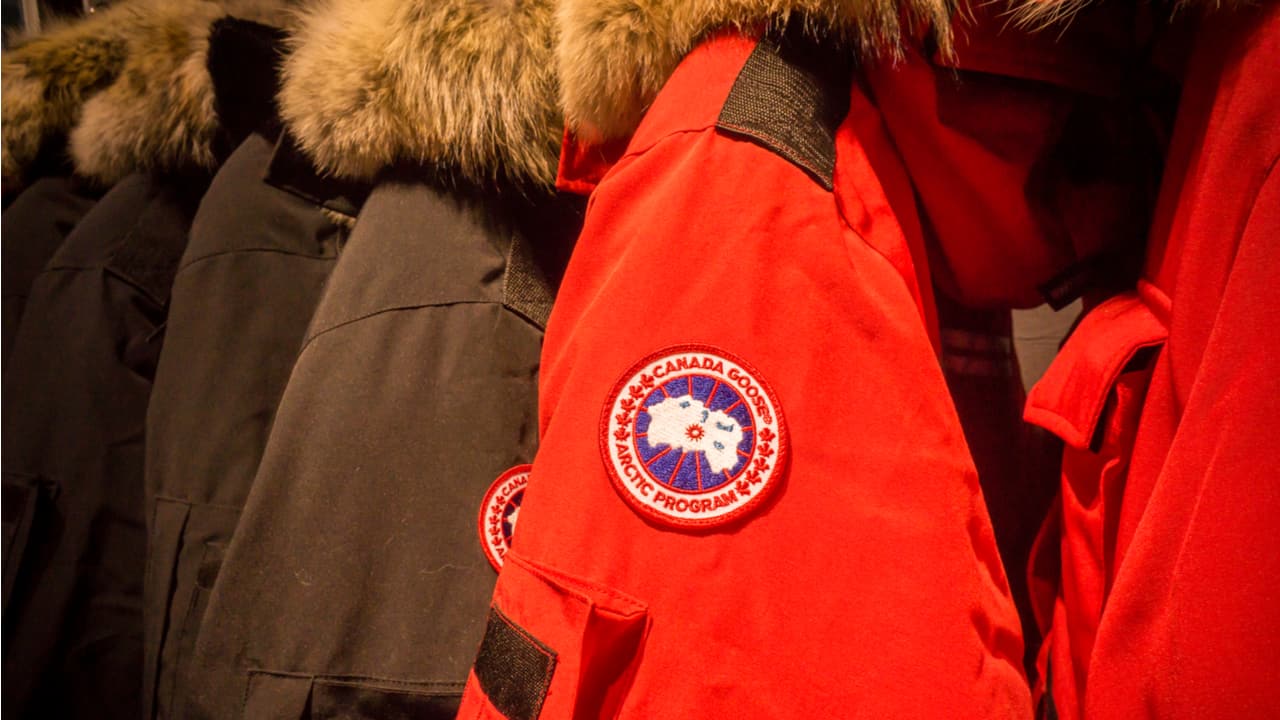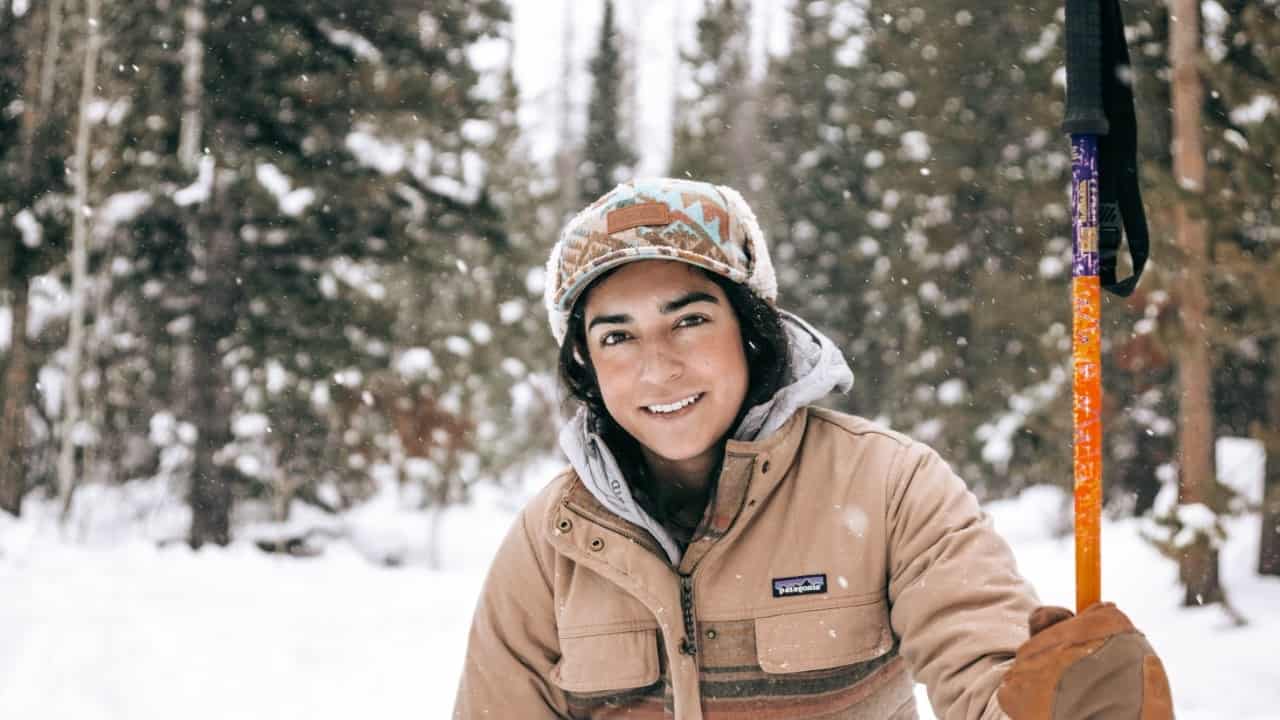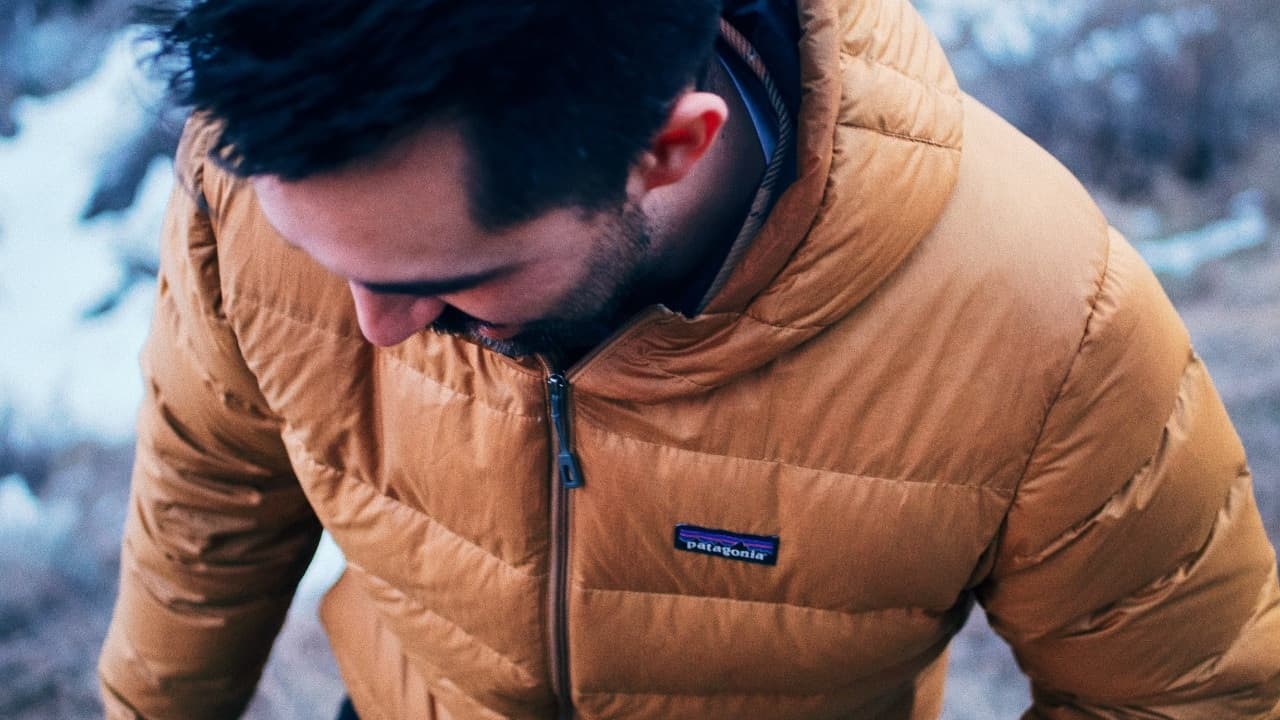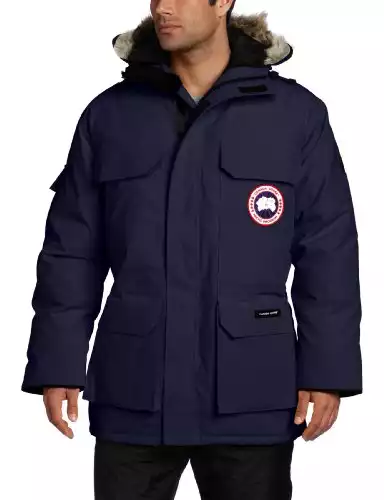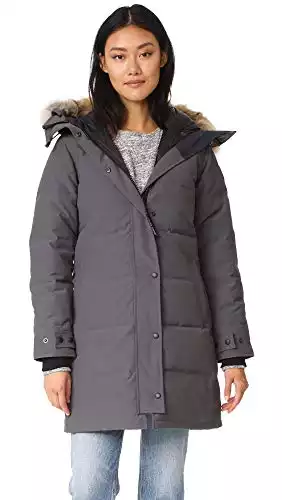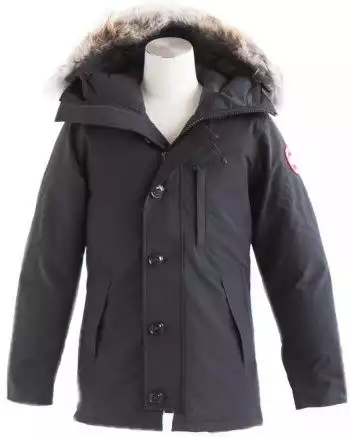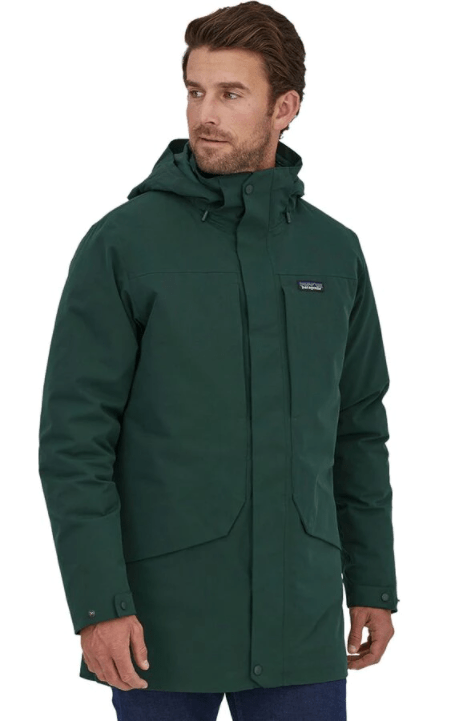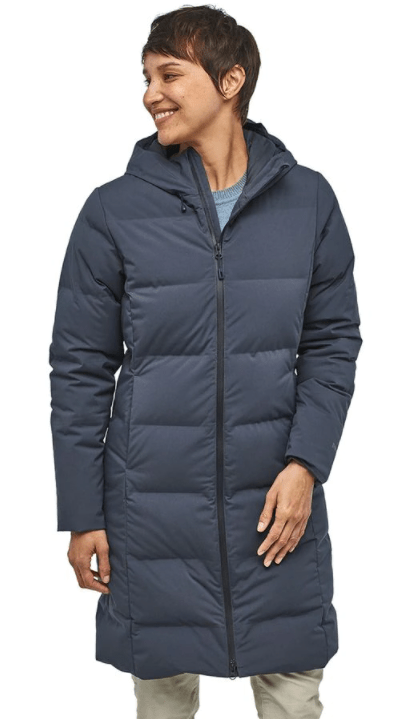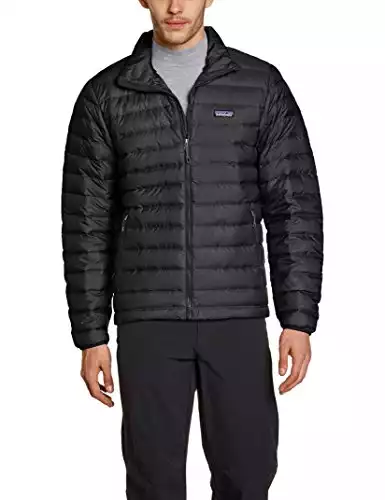On one side we have Patagonia, a brand from the U.S. that is dedicated to making high-end outdoor gear with a lower environmental cost. On the other side, we have Canada Goose, an outdoor gear brand that is worn by fashionistas on the red carpet as well as intrepid explorers on Arctic expeditions.
Many outdoor adventurers love these two brands, myself included. There is a good reason why I have featured both Patagonia and Canada Goose in many of my past selections, reviews, and comparisons.
It’s high time I compared them side by side. Let’s see which brand would be a better pick for your outdoor adventures.
Canada Goose
About the Brand
You probably hadn’t heard of this brand until the last decade (unless you are a Northern Canadian police officer or an arctic scientist).
To most of us, it seems like Canada Goose came out of nowhere. Around the year 2013, I started seeing it everywhere. Famous actors, rappers, and billionaires could often be seen wearing Canada Goose jackets.
It’s tempting to think that the brand was only made famous thanks to celebrity partnerships. But the brand’s sudden popularity was a result of decades of development, not just a new, clever marketing campaign.
Over 60 years ago, a Polish immigrant by the name of Sam Tick started manufacturing winter garments in a small warehouse in Toronto. Back then, his company was known as Metro Sportswear.
In the beginning, the company catered almost exclusively to research teams, police departments, and other people who spend a lot of time in frigid temperatures.
In the ’70s, David Reiss, the founder’s son-in-law, invented the volume-based down filling machine. This invention allowed the company to pack more down insulation into its products.
Most importantly, it facilitated the creation of the brand’s flagship product—extremely warm down parkas. Around this time, the company changed its name to Snow Goose.
In the ’80s, the company developed a super warm parka for the scientists working at the McMurdo Station in Antarctica. Known as “Big Red,” the coat was able to hold up in the most inhospitable environments. It would come to define the brand.
The company changed its name again in the early ’90s when it began selling its products in Europe. Soon after, Canada Goose started to appeal to Europe’s weather-conscious fashion elite.
Patagonia
About the Brand
In 1965, a passionate mountain climber, Yvon Chouinard, founded Chouinard Equipment. In its early days, the company only made mountain climbing gear. After the company’s climbing equipment gained a following, Chouinard decided to start making apparel for all outdoor enthusiasts.
He founded Patagonia in 1973 in California. Throughout the ’70s, the brand introduced a variety of innovative outdoor clothing items to the North American market.
In 1977, Patagonia released its signature Pile Fleece jacket. The jacket became incredibly popular due to its ability to provide warmth and absorb moisture at the same time.
In the ‘80s, the brand started making insulated long underwear made of polypropylene. The product became a favorite among the outdoorsy masses. In fact, Patagonia’s long underwear helped popularize the concept of layering.
For the past couple of decades, Patagonia has prioritized the use of recycled and sustainable materials.
To this day, it is committed to developing revolutionary fabrics and technologies. Recent breakthroughs in materials include natural rubber that reduces CO2 emissions by up to 80%, known as Yulex, and a lyocell fiber that comes from the pulp of sustainably grown trees—Tencel.
Like Canada Goose, Patagonia has had a big impact on high fashion in the last ten years. But, unlike Canada Goose, it didn’t become a part of the street style renaissance on purpose.
Moreover, Patagonia refuses to capitalize on its newfound cache with high-end fashion collabs. Instead, the company continues to focus on making explicitly outdoor merchandise.
Read my Outdoor Research vs Patagonia comparison if you are interested in other brands like Patagonia.
Similarities and Differences Between Patagonia and Canada Goose
Materials and Sustainability
Both Patagonia and Canada Goose make products that are built to last. Whether you get a Patagonia jacket or a Canada Goose jacket, it can last you a lifetime.
Both Canada Goose and Patagonia use nothing but premium materials. However, the majority of Patagonia’s products use materials and fabrics such as reclaimed cotton, hemp, and recycled down.
Of all the outdoor gear brands, Patagonia has the biggest selection of fair trade certified apparel. The company is constantly working on decreasing waste and inefficiency in its supply chain and reducing its carbon footprint.
And, considering that the company ran an ad reading “Don’t Buy This Jacket” in the New York Times, on Black Friday, I don’t doubt their commitment to sustainability and the environment.
Canada Goose, on the other hand, is not known for being an environmentally conscious brand.
Canada Goose has made a number of high-profile commitments to sustainable practices, such as halting all purchases of new fur, but they are still far behind Patagonia.
The company’s use of fur has been an evergreen source of controversy. So, why does Canada Goose still use Coyote fur to trim the hood of its jackets? Well, when you are on an Arctic expedition, nothing will protect your face from extreme snow and wind as well as fur.
Canada Goose claims that it sources its fur ethically. Now, if you don’t share the same definition of the word “ethical,” Canada Goose, but you still like the brand’s products, Canada Goose offers a wide selection of furless parkas.
On the other hand, if you do need a fur-trimmed Canada Goose jacket to keep you warm, you may want to get it sooner rather than later. By the end of 2022, Canada Goose will go fur-free.
Interestingly, when exploring other brand comparisons like Moose Knuckles and Canada Goose, the discourse often extends into the realms of ethical sourcing and sustainability, reflecting a growing consumer interest in environmentally responsible shopping.
Manufacturing
Canada Goose has always stayed true to its brand name. To ensure the best possible quality of its products, Canada Goose still makes all of its products in its home country.
Moreover, all Canada Goose’s down is sourced from Canada, while all the fur is sourced from Canada and the U.S.
Lastly, each Canada Goose product has to go through a rigorous manufacturing and testing process. Because this takes a lot of time and manpower, there’s a limited amount of Canada Goose products on the market.
Most of Patagonia products, on the other hand, are not made in the U.S. The brand has factories all over the world.
That said, Patagonia is very transparent about where and how it manufactures its products. And, despite having several factories in developing countries, Patagonia is still one of the best and most sustainable outdoor brands on the market.
Still, if you value uncompromising craftsmanship above everything else, I’d say that Canada Goose is a better choice. But not by a long shot.
Best Canada Goose Jackets
Canada Goose Expedition Parka
Specs
- Main fabrics: Arctic Tech (85% polyester, 15% cotton); coyote fur
- Insulation: 625 fill power down
- Weight: 4.5 lb
Pros
- Incredibly warm
- Extraordinary craftsmanship
- 10 external pockets
- Stylish
- Super comfortable
Cons
- Expensive
The Canada Goose Expedition Parka is the warmest jacket I’ve ever seen. But it’s also the bulkiest and the priciest one.
This model is nothing like your everyday jacket. It’s the pinnacle of coziness, and comes with a number of cool features.
The long rib-knit cuffs offer an excellent seal and the integrated snow shirts prevent updrafts from entering the jacket. And, thanks to the fur-lined hood, you’ll never have to worry about frostbite.
To keep the wind and snow from whipping you in the face, the hood features a three-way adjustable cord. The waist also uses a drawcord.
And with 10 exterior pockets, both Zippered and Velcroed, one doesn’t even need to carry a backpack.
The Expedition sheds sleet and snow with ease. But, at the same time, it offers a decent level of breathability.
Canada Goose’s heavy-duty Arctic-Tech shell is as tough as a tank. It is incredibly tear-resistant. When it comes to durability, very few jackets can compare to the Expedition Parka.
If you like exploring the coldest places on Earth, the Expedition Parka is a smart investment.
Canada Goose Women’s Shelburne Parka
Specs
- Main fabrics: Nylon, polyester, natural coyote fur
- Insulation: 625 fill power down
- Weight: 4 lb
Pros
- Durable
- Windproof
- Highly water-resistant
- Warm
- Stylish
Cons
- Pricey
The Shelburne Parka can withstand menacingly cold weather thanks to its durable Arctic-Tech shell and 650-fill duck down insulation. It excels in temperatures between 15°F and 5°F.
The hood allows for a tight fit in stormy weather and the fur helps seal out the wind. The two hand-warmer pockets feature microfleece lining. I find fleece-lined pockets to be much cozier and warmer than pockets with only polyester or nylon inside.
If you want to go hands-free without having to carry the parka, you can use the interior carrying straps. The Shelburne is not a waterproof jacket, but the DWR finish on the outer shell is still quite impressive.
Thanks to the real fur ruff around the hood and the durable exterior, the Shelburne is a winter coat that both feels and looks good. The matte appearance is stylish and emphasizes the jacket’s durability.
Canada Goose Chateau Parka
Specs
- Main fabrics: Arctic Tech (85% polyester, 15% cotton); coyote fur
- Insulation: 625 fill power white duck down
- Weight: 2.2 lb
Pros
- Durable
- Lifetime warranty
- Super warm
- Comfortable
- Plenty of cool features
Cons
- Layering underneath might be difficult
Here we have another Canada Goose classic. It boasts a simple look and a slim-fit cut.
The Chateau comes with a sturdy storm hood and the iconic coyote fur trim. The hood is adjustable and the coyote fur is removable.
To keep your hands warm and toasty, the Chateau features fleece-lined hand-warmer pockets. I also like the zippered napoleon pocket. There are also three interior pockets, so you will never have to worry about the lack of storage.
The ribbed cuffs and the button-front storm placket do a great job of blocking out the wind. The Chateau also features a 2-way zipper and a great chin guard.
I find the jacket’s temperature rating (-13° F) to be fairly accurate. The lofty white duck down efficiently traps heat and the water and wind-resistant Arctic-Tech shell provides extra insulation.
Compared to other Canada Goose jackets, the Chateau has a more tailored fit. For those that are looking to layer underneath, do know that the fit tends to run a bit small. You might need to size up.
Best Patagonia Jackets
Patagonia Tres 3-in-1 Parka
Specs
- Main fabrics: 100% polyester stretch twill; H2No Performance 2-L
- Insulation: 700 fill power down
- Weight: 3.4 lb
Pros
- Durable
- Breathable
- Comfortable
- Versatile
- Warm
Cons
- Zippers not waterproof
Thanks to its modular construction, great styling, and powerful weather resistance, the Tres is an extremely versatile winter parka.
It boasts high-quality down insulation and a hanging nylon layer. I find it to be warm enough for most winter use.
Patagonia’s proprietary H2No membrane offers complete protection from sleet, snow, and rain. Together with the high-quality coating, it does a great job of repelling liquid water. But I was very surprised when I found out that the zippers are not waterproof.
Considering the level of weather protection it offers, the Tres is surprisingly breathable. On its own, the down sweater component is very comfortable. The outer layer doesn’t feel as nice against the skin, but it’s also comfy.
On top of the ability to be worn in spring, fall, and winter, this parka is loaded with features. To create a snug fit, the hood has three adjustable pull cords. The down sweater has one interior chest pocket, one exterior chest pocket, and two external handwarmer pockets.
Furthermore, the strong zippers, burly outer shell fabric, tight seams, and Patagonia’s great warranty program make the Tres 3-in-1 parka an incredibly good investment.
Patagonia Women’s Jackson Glacier Parka
Specs
- Main fabrics: 100% recycled polyester
- Insulation: 700 fill power down
- Weight: 2 lb
Pros
- Comfortable
- Extremely light
- Warm
- Highly water-resistant
- Sleek
Cons
- Awkward collar
It is hard to believe that such a light and thin parka is warmer than many of the bulkier options on the market. It will protect you and keep you warm in temperatures as low as 17°F. This is all thanks to the insulated hood, snug wrist cuffs, and a fair amount of high-quality down.
The small, adjustable hood is better fitted than most. To hold it in place and make sure your ears are protected from the cold and wind, you can tighten it down.
The jacket is not waterproof, but it does a great job of shedding water. The no-sew seams and the zipper also offer protection from moisture.
The Glacier parka can easily accommodate a few winter layers, thanks to its roomy cut. The liner feels cozy and glides smoothly over other fabrics.
The pockets are spacious and well placed. The shoulders feel a bit tight, but they give the wearer plenty of room to comfortably raise their arms.
Whether you are wandering around the trail or strolling around the city, the slim and streamlined profile of the jacket will make you feel put together.
Patagonia Down Sweater Jacket
Pros
- Comfortable
- Stylish
- Warm
- Versatile
- Long torso provides good coverage
Cons
- Down is not hydrophobic
The Patagonia Down Sweater has been a long-time favorite of hikers, campers, and outdoor adventurers of all types. Lightweight, warm, and super versatile, the Patagonia Down Sweater makes for a great do-it-all piece.
What I like about it the most is the fact that it is not super specialized for any one activity. It has served me well on stormy days in the mountains as well as cold desert nights.
Unlike most down jackets in its price range, it doesn’t come with flashy tech specs or gimmicks. It does, however, boast high-quality craftsmanship, functional design, and a lifetime warranty.
I also found it to be an excellent mid-layer when things turned truly nasty. The cinchable waist and elastic wrist cuffs are crucial elements of the Down Sweater’s warmth. In addition to its 800 fill power down, of course.
To keep moisture out, the jacket relies on its DWR-coated ripstop polyester shell. From my experience, it does a good job of repelling light rain.
However, you’ll need an extra shell when in heavy rainfall. Otherwise, your coat will get soggy because the down is not hydrophobic.
Takeaway
Both brands make high-quality, stylish jackets that last for decades.
But Canada Goose jackets are a better option if you live in an extremely cold but dry place.
Each Canada Goose parka comes with an impressive temperature rating and will keep you warm and comfortable in inhospitable weather for hours on end.
In the broader landscape of outdoor apparel, discussions often branch out to other notable comparisons. For instance, debates around Eddie Bauer and L.L. Bean highlight the nuances between two other renowned brands, emphasizing the diverse choices available to consumers.
If harsh winters are not so common where you live, or if you need a jacket for the shoulder seasons, Patagonia is a better choice in my opinion.
Patagonia’s jackets are more versatile and generally offer better protection from the rain compared to Canada Goose jackets.
Moreover, they are much more affordable. If you need a jacket for moderately cold or rainy conditions, Patagonia will do just as good a job as a Canada Goose jacket, if not better, for less money.
If you are interested in other Canada Goose Alternatives, check out this Canada Goose vs Nobis comparison.

I love hiking, backpacking, and camping. From the Camino de Santiago to the West Highland Way in Scotland or simply a great day hike on the weekend. Hiking refreshes me, my mind, and keeps my body reasonably fit. So far I have walked three Camino routes and many other long distance hikes in the UK, Canada, and around the rest of Europe. One of the best was my hike up Ben Nevis.

